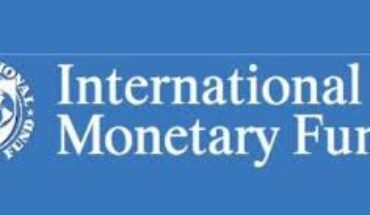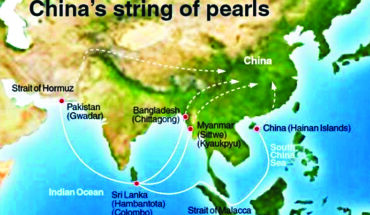Intrapreneurship is considered as an act of entrepreneurship within an organization. Across the sectors, firms have recognized the potential of intrapreneurship. Pharmaceutical sector is not an exception in this regard. Those companies which are leaders in their domain today, had their origin as a start-up so their founders understand that entrepreneurial mindset is required to keep the momentum. Promoters who are in the driving seat understand that professional managers are engrossed in day-to-day operations of organization or are reluctant to change the status quo. Therefore, to reignite the entrepreneurial spirit and nurture entrepreneurial mindset, founders/promoters take up intrapreneurial initiatives.
Intrapreneurship is distinctively recognized from terms such as ‘Skunk Works’, ‘Bootlegging’, and ‘Moonlighting’ as it is not a clandestine activity and it is not unbudgeted, unofficial or non-programmed, and it is not at the cost of the organization to benefit employees only. In September 2022, Wipro Chairman Rishad Premji said that his company fired 300 workers for moonlighting after it was found that they were working for competitors secretly. His tweet became the topic of debate when he said – There is a lot of chatter about people moonlighting in the tech industry. This is cheating – plain and simple. Moonlighting had its proponents too, e.g., Tech Mahindra Managing Director & CEO C. P. Gurnami supported the idea when he said that he would introduce policies to enable employees to be more open about it. In contrast to this, bigger corporations support intrapreneurship through proper direction, space and support by allowing employees to spend part of their time, say 10%-20% on innovative ideas of their own along with providing resources and creating enabling environment. British Petroleum came up with Corporate Entrepreneurship model that asked for finding balance between constraints and chaos through proper ‘direction’, ‘space’, ‘boundaries’, and ‘support’.
Pharmaceutical sector is capital-intensive in nature and is highly regulated at each step of the value chain. In that background, intrapreneurial initiatives which can be applied in other sectors, may not be suitable in pharmaceutical sector. Pharmaceutical companies which have sufficient resources to support intrapreneurial initiatives are well-positioned to take up these initiatives. Global pharmaceutical companies which figure among top 20 have taken up one or other type of intrapreneurial initiative, and their initiatives are not restricted to parent company’s headquarters only, e.g., Novartis which is otherwise based in Switzerland had taken up Bottom of the Pyramid (BoP) initiative. An initiative, ‘Arogya Parivar’ was launched as a pilot program in South India by Novartis way back in 2007. Similarly, Sanofi India took up ‘Lakshya’ Initiative in India.
Top global pharmaceutical companies have shown the ways to nurture intrapreneurship. Pfizer (USA) came up with PfizerWorks, AbbVie (USA) initiated AbbVie Innovation Center. Janssen which is an associate of Johnson & Johnson (USA) started Entrepreneurial Boot Camp, and JLABS. Eli Lilly (USA) had initiated ‘InnoCentive’ which became a standalone initiative later. Mylan, another prominent company from the USA, started ‘Hackathons’ and Lion’s Den with specific focus on Innovation.
Many prominent pharmaceutical companies from Europe took intrapreneurial plunge. GSK (UK) pursued PULSE and Centres of Excellence for Drug Discovery (CEDDs). AstraZeneca, another prominent pharmaceutical company from UK came up with Innovative Medicines Units (iMeds). Bayer AG (Germany) initiated Triple-I where “I” stood for ‘Inspiration, Ideas and Innovation’. The company also came up with CATALYST fund. Boehringer Ingelheim (Germany) launched ‘Making More Health’ (MMH) initiative. Novo Nordisk (Denmark) pursued ‘Innovation Culture Initiative’. UCB (Belgium) pursued Team of Accelerators for Innovative Solutions (TAXIS) initiative. Roche (Switzerland) came up with Genentech Research and early Development (gRED), Pharma Research and Early Development (pRED). Merck KGaA (Germany) pursued Innospire, a word composition from “Innovation” and “Inspiration”.
Japanese pharmaceutical companies also recognized the potential of intrapreneurial initiatives. Takeda launched Dragon’s Den and Technology Accelerator. Eisai (Japan) launched E-elite Program which stood for Eisai Emerging Leaders in Talent Evolution Program, and the key objective was to create intrapreneurs. Daiichi Sankyo (Japan) launched Venture Science Laboratories (VSL). Other notable pharmaceutical companies from Japan which took up intrapreneurial initiatives include Chugai Pharmaceuticals and Sumitomo Dainippon Pharma. Chugai Pharma came up with ACCEL 15 as a mid-term business plan besides Innovation Beyond Innovation 18 (IBI 18) as a new mid-term business plan. Sumitomo Dainippon had introduced Work-style Innovations.
Above examples point out that these pharmaceutical companies made a conscious effort to come up with an intrapreneurial initiative. Most of these initiatives have been taken up by these pharmaceutical companies in last two decades. Novartis came up with Arogya Parivar initiative in 2007. Pfizer initiated PfizerWorks in 2008, Roche implemented Genentech Research and Early Development which was renamed as gRED in 2009 post-acquisition of Genentech. Pharma Research and Early Development (pRED) of Roche came up in 2013. Lakshya initiative of Sanofi was launched in 2008. Innospire from Merck KGaA was initiated in late 2008 and could become operational in 2009. JLABS as the Incubator Division of J&J came up in January 2012 with first location in San Diego. Janssen Campus Office (JCO) came up little earlier in 2009 that had a specific emphasis on ‘open innovation’ and ‘sustainability’.
Centres of Excellence for Drug Discovery (CEDDs) of GSK were formed in 2001 and PUSE initiative from GSK came up in 2009. Innovation Medicines units (iMeds) of AstraZeneca came up in 2010. Triple-I of Bayer AG came up in 2010. Other initiatives from Bayer AG such as WeSolve and CATALYST fund came up in 2014 and 2017 respectively. Eli Lilly launched InnoCentive in 2001 which was later spun out of Eli Lilly in 2005. ‘Making More Health’ of Boehringer Ingelheim was launched in 2010 with specific focus on Innovation, Social Intrapreneurship and Back to Future – Ideas. Innovation Culture Initiative of Novo Nordisk came up in 2009 but it was abandoned in late 2012. Venture Science Laboratories (VSL) was set up as an in-house start-up organization by Daiichi Sankyo in 2013. TAXIS from UCB was initiated in 2017.
Dragon’s Den and Shark Tank have left impact on pharmaceutical companies too as is evident from initiatives of Takeda and Mylan. ‘The Tigers of Money’ for which format is owned by Nippon TV originated in Japan in 2001. In contrast to this, Dragons’ Den premiered on January 4, 2005 and Shark Tank premiered on August 9, 2009. Takeda (Japan) launched Dragon’s Den initiative in 2015. Mylan came up with Hackathons and Lions’ Den which was touted as an internal version of the TV show ‘Shark Tank’ by Michael Smith who served as Chief Information Officer, Mylan. On the lighter note, it seems that Indian companies in general and pharmaceutical companies in particular seem to be late entrants as Shark Tank India premiered on December 20, 2021.
Focus of intrapreneurial initiatives in pharmaceutical companies was not uniform. PfizerWorks emphasized on outsourcing of non-core jobs related to R&D, strategic management, and other related areas. Novartis focused on marketing domain with specific emphasis on rural markets. Less than one-third companies out of top 20 comprising Roche, AbbVie, GSK, AstraZeneca, and Daiichi Sankyo focused on R&D with specific emphasis on R&D productivity. Higher emphasis of intrapreneurial initiatives was on innovation resulting into new products and new services as prominent pharmaceutical companies comprising Eisai, UCB, Novo Nordisk, Sumitomo Dainippon, Chugai Pharmaceuticals, Merck KGaA, and Bayer laid emphasis on these areas under their intrapreneurial initiative. Other areas of emphasis under intrapreneurial initiative comprised ‘digitalization’ (by Takeda and AbbVie), Crowd-sourcing and Open Innovation (by Eli Lilly), Development of Business Solutions (by Bayer, Merck KGaA), Cross-functional areas (by Sanofi), and Overall Business Plan by pharmaceutical companies like Janssen, J&J, Takeda, Boehringer Ingelheim and Mylan.
R&D intensive intrapreneurial initiatives of these pharmaceutical companies allowed scientists to pursue projects of their individual interest and at the same time, help the pharmaceutical company to meet its R&D goals. CEDDs in GSK were focused on fostering innovative output by enabling accountability and creativity. Similarly, Innovative Medicine units (iMeds) of AstraZeneca encouraged early-stage research. Innovation-centric intrapreneurial initiatives encouraged employees to submit ideas for new products and develop business solutions. Entrepreneurial Boot Camps, e.g., JLABS of Janssen consisted of residential sessions and dealt with all aspects of successfully setting up a new business. Dragon’s Den (Takeda) solicited digital ‘patient-and customer-centric ideas’ from the employees.
Indian pharmaceutical companies can take a leaf out of prominent global pharmaceutical companies’ book for their intrapreneurial initiatives and learnings. This can be helpful for Indian pharmaceutical companies in improving R&D, innovation, launch of new products/services, and patient-and customer-centric ideas, digitalization, to name a few areas thereby contributing to their efficiency and effectiveness.
Dr. Anil Kumar Angrish, Associate Professor (Finance and Accounting), Department of Pharmaceutical Management, NIPER S.A.S. Nagar (Mohali), Punjab
Disclaimer: Views are personal and do not represent the views of the Institute.






